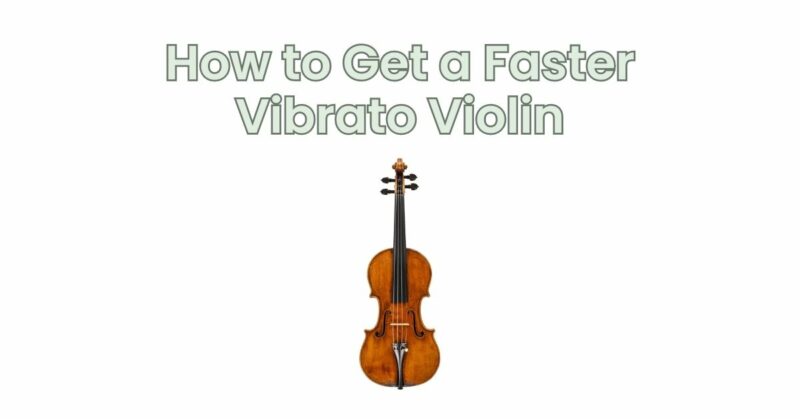Vibrato is a versatile and expressive technique on the violin, and developing speed in vibrato adds a dynamic element to your playing. Building speed requires consistent practice, proper technique, and a gradual increase in tempo. In this article, we will explore various tips and exercises to help you develop a faster vibrato technique on the violin and unlock new possibilities in your musical expression.
- Establish a Solid Foundation:
- Before focusing on speed, ensure that your basic vibrato technique is well-established. Practice slow and controlled vibrato movements, paying attention to finger placement, hand position, and the overall smoothness of the oscillation.
- Develop a relaxed hand and arm position, as tension can impede speed. Keep your hand and fingers rounded, maintain a relaxed wrist, and focus on the motion coming from the forearm.
- Gradual Tempo Increase:
- Start with a comfortable and controlled tempo, and gradually increase the speed over time. Begin at a tempo where you can maintain control and accuracy, and then incrementally push the tempo faster as your technique improves.
- Use a metronome to track your progress and maintain a steady tempo. Increase the metronome speed by a few beats per minute each time you feel comfortable and confident.
- Finger Flexibility and Strength:
- Developing finger flexibility and strength is crucial for a faster vibrato. Incorporate finger exercises and stretches into your practice routine to increase finger dexterity and control.
- Practice finger independence exercises, trills, and rapid finger lifts to enhance finger agility and control, which directly translates to faster vibrato movements.
- Isolate Vibrato Motion:
- Isolate the vibrato motion by focusing on just the finger movement. Practice the vibrato motion without actually pressing down on the string. This allows you to focus solely on the finger speed and oscillation.
- Gradually reintroduce the contact with the string, maintaining the same speed and motion as you previously practiced without pressing down. This exercise helps build the muscle memory for faster vibrato.
- Vary Speed and Intensity:
- Explore different speeds and intensities within your vibrato technique. Practice variations of slow, medium, and fast vibrato, allowing yourself to experiment and find the range of speeds that suit different musical passages.
- Develop control over the intensity of your vibrato, understanding that a faster vibrato may require a lighter touch while maintaining precision and clarity.
- Play Repertoire with Faster Vibrato Passages:
- Apply your newfound speed in vibrato technique to actual pieces of music. Look for passages in your repertoire that demand faster vibrato and use them as opportunities to further develop your speed and accuracy.
- Focus on maintaining control and musicality as you incorporate faster vibrato into your playing. Pay attention to phrasing, dynamics, and the overall expression of the music.
Conclusion:
Developing speed in vibrato technique on the violin requires focused practice, patience, and a gradual approach. Establish a solid foundation, gradually increase tempo, and focus on finger flexibility and strength. Isolate the vibrato motion and vary speed and intensity. Apply faster vibrato technique to your repertoire, incorporating it into musical passages that demand speed and agility. Remember to maintain control, accuracy, and musicality throughout the process. With consistent practice and dedication, you will develop a faster vibrato that adds a new dimension of expressiveness and virtuosity to your violin playing. Enjoy the journey of exploring the possibilities of speed in vibrato and continue to push your boundaries as a musician.


